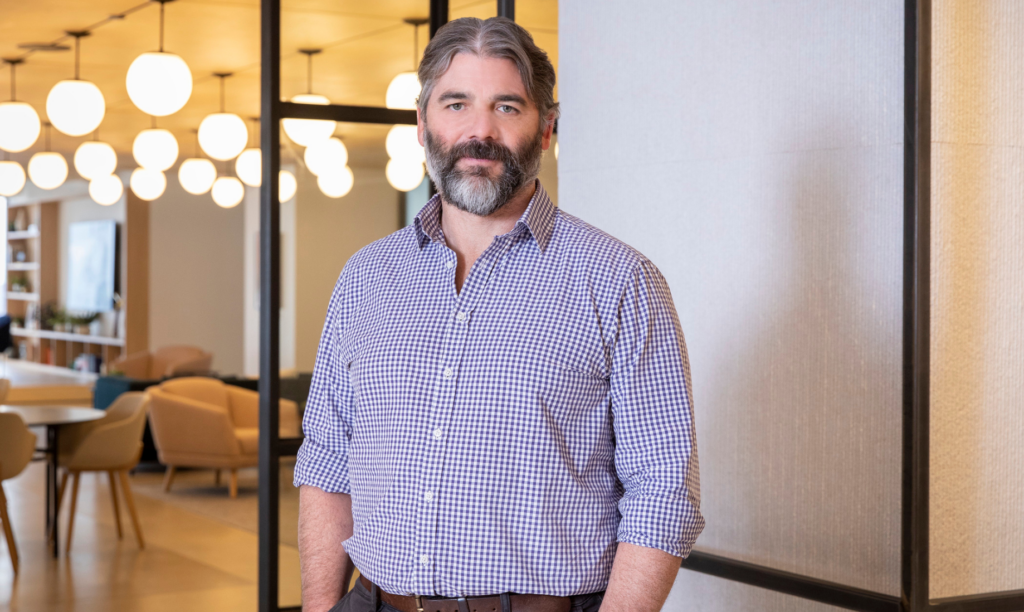Q&A: Chief Development Officer Britt Winterer on Bringing Infill Projects to Life

Link Logistics develops best-in-class facilities near urban cores to meet market demands and help customers maximize efficiency. Chief development officer Britt Winterer leads a team who works cross-functionally to select sites and bring projects to life. Here, Winterer discusses the firm’s unique development capabilities and its focus on infill real estate.
What is Link Logistics’ development focus and what would you say is the main factor your Development team weighs when considering projects to pursue?
The development focus from Day One has been on the most infill locations in very specific markets where we see the greatest amount of customer demand and the least amount of new development, resulting in outsized value creation and investor interest. Link Logistics customers want to be in last-mile locations close to end consumers so they can operate more efficiently.
The challenge is two-fold: First, there is very little space that is not already developed in cities, and second, these sites are so infill and in such tight markets that they are complicated to develop. More often than not we are building on landfills, for instance, or we’re tearing down and cleaning up old tank farms, or – my favorite thing to do – demolishing office buildings. Such sites are difficult to develop, so many real estate firms don’t want to get involved. But we have the ability to navigate those challenges to the benefit of our investors and our customers.
Infill is a such a high priority across the industry that there can be motivation to stretch the definition. What do you consider infill?
Looking at our overall portfolio, on average Link Logistics properties are located within a 30-minute drive of 1 million people. That’s the type of true infill focus we maintain with respect to the developments we pursue and deliver—sites that are really in or directly adjacent to the population centers serviced by our customers.
You mentioned that developing infill sites is particularly complicated. How is Link Logistics able to solve for those challenges?
It starts with having a very convicted capital partner in Blackstone, who believes wholeheartedly in the long-term value of industrial real estate—and infill especially. We also have a great Research & Analytics department at Link Logistics. Their work helps us analyze customer demand, vacancy, absorption and other variables at the market, submarket and property levels. We have extraordinarily talented local people on our Development and Investments teams, with excellent relationships in their markets. They are problem-solvers whose knowledge, creativity and tenacity power the entire process—from initially finding the right sites, to getting them under contract and closed, to navigating entitlements, to designing and constructing the best buildings in the markets where our customers need them most. Finally, credibility is essential to winning deals in the marketplace, so we work hard to ensure that we have a great reputation. When we say we’re going to do something, counterparties trust us.
Can you provide an example of a development project that encapsulates Link Logistics’ approach?
One that comes to mind is Trident Logistics Center, which is a redevelopment project of a 44-acre former oil storage facility that we are converting into a last-mile distribution hub. It’s a great example of taking a site whose use has become obsolete and transforming it into something that creates jobs and taxes for the local community and is beneficial to the modern economy.
This location is just three miles from downtown Boston. The project is environmentally contaminated and adjacent to Boston waterways, so the geotechnical qualities are challenging. We are building two Class-A, LEED v4-certified buildings spanning more than 650,000 square feet. Dan Connaughton, a senior vice president on our Development team, originated the deal and is a Boston native who is personally thrilled to see this site converted from a polluted eyesore into something that creates opportunity for people and is economically additive to the area. Trident Logistics Center has been a complicated undertaking, but I think it really reflects our capabilities and values at Link Logistics in several ways.
The development environment for industrial real estate has been very dynamic over the past few years. How do you and your team ensure that you aren’t over- or under-developing?
Real estate very consistently goes through cycles of strength and weakness and our Investments, Development and Leasing teams are all focused on being very close to the pulse of each market we cover. Also, given the scale of our portfolio we have a tremendous amount of data that, along with some of the analytics our Research team brings to the table, gives us a unique perspective on market trends. The combination of human knowledge and data at scale really guides Link Logistics as a firm.
What are some industrial real estate development trends to watch over the next few years?
Prioritizing sustainability and energy efficiency will continue to be a focus across the industry to provide long-term value for both Link Logistics customers and investors. Our developments are all built to LEED standards, and we continue to innovate in that space. Another trend to watch is some customers’ increasing need for power to support things like automation in their facilities and EV chargers in their car and truck fleets, as well as some increased manufacturing capacity amid onshoring and reshoring trends. The increased need for power also means a greater need for sustainable energy as businesses seek to keep costs down, meet their own sustainability goals and support the larger energy transition. The final thing I would mention again is just infill, infill, infill—which will continue to be a priority and drive demand simply due to the advantages it provides for businesses.